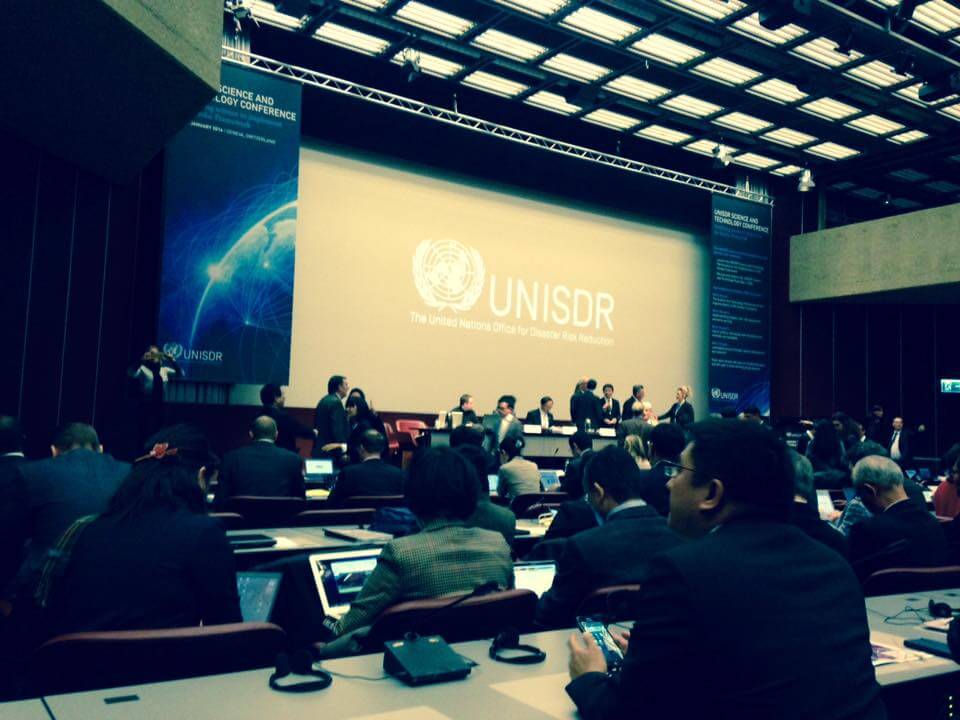On the 27th January 2016, 1000 scientists, policy makers, practitioners and DRR and resilience specialist came together in Geneva for a three day conference exploring how to put the Sendai Framework into action. Becky Murphy attended as part of the Kings College London Centre for Integrated Research on Risk and Resilience (CIRRR) team, which includes the Linking Preparedness Resilience & Response (LPRR) project (part of Start Network’s Disasters and Emergency Preparedness Programme).
“We headed out to the Science and Technology Conference, hosted by the United Nations Office for Disaster Risk Reduction in Geneva to represent the CIRRR centre’s research and progress in bridging the gap between the scientific, academic, policy and practitioner world.
With the aim of presenting the LPRR project and pushing it to the forefront of the debate on how to utilise science and research for improved practice; the need for more projects that act as a knowledge broker and key communicator between the academic and practitioner world was heavily drawn upon.
Be useful, have a practical purpose…
Doing research that is socially and economically useful is imperative. This is something that the CIRRR is attempting to champion; research to address and overcome issues, not just identify problems.
Clearly we still need to bridge the gap between scientists, practitioners and policy makers. We’ve made progress but we have by no means cracked this yet.
The tone of day 1 highlighted the need to leverage scientific data and knowledge to act as a core foundation, to raise awareness of risk, to validate indigenous knowledge and to increase the capacity of at risk people, policy makers and decision makers to identify, monitor, prepare for and adapt, respond, recover and transform with ever changing risks.
Same chat different platform? Is it not time to act?
However, does this not sound like the same discussion that the sector has been having over and over again?
Challenge ways of working…
A number of speakers raised the issue that there is a lot of innovation, pilots and exciting projects going on. Many of these have been very successful and identified new, effective ways to do things. However these innovations get stuck, they stay as pilots and do not go any further. They become a shiny paper, they are presented, talked about and praised but are not put into action.
Unified, the conference asked why? Why this is the case? Why don’t we take forward these successful innovations? We need to understand what is blocking organisations, governments and communities from changing ways of working, why they can’t transform to learn, improve, tackle root causes, reduce vulnerability and strengthen resilience. We need to identify what the problem is and see it through to tackle this. This is crucial.
Core Messages…
“If we don’t get a handle on preventing disasters we will never be able to cope with what is coming ahead” Dr Robert Glasser
DRR is an investment not a cost. It was clear that the scientific and academic community have an important role to play in leveraging the actions required to meet the Sendai Framework. It was fantastic to see that the LPRR project is attempting to address many of the messages highlighted by the conference. Primarily:
- The need and importance of harnessing expertise from national and local universities and research institutions
- The importance of utilising local, indigenous knowledge
- The need for longer term, flexible, consistent funding
- The need to identify, understand and address root causes of vulnerability at all stages of humanitarian and development interventions
- The need to build local capacity to prepare for, respond to and recover from ever changing risks and shocks
The Road Map…
See the full road map that has been developed to guide us in meeting the Sendai Framework.
However, reflecting on the LPRR project and the action lead research work that CIRRR is pioneering; here is a snap shot of Priority 4 “Leveraging Science through Capacity Development & Research” where a number of core messages were put forward.

